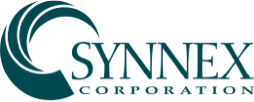Make learning accessible
Schools today must address the needs of a diverse student population, which include a range of physical abilities and learning styles. To ensure learning is accessible to every student, schools require assistive technology that can support all learners, whether they are in class, at home, or on the go and regardless of their ability to work online or offline.
To meet these challenges, Windows 11 devices and Microsoft 365 provide built-in assistive technologies at no extra cost. These tools support students with diverse needs and transform the learning experience in six important areas:
1. Vision: Tools such as screen reading, speech-to-text, Seeing AI, Magnifier, and more aid vision-impaired students.
2. Hearing: Live captions and meeting transcriptions make it easier to engage students.
3. Language: Integrated translation tools build confidence for emerging readers in more than 45 languages.
4. Mobility: Tools such as typing with your voice or a pointing device and clicking with your eyes engage students with mobility challenges.
5. Neurodiversity: Tools such as Immersive Reader, reading progress in Teams, Focus Assist, and more improve comprehension.
6. Access: Online and offline capability along with locally installed applications and web-based apps help students learn from anywhere, regardless of bandwidth or connectivity. Affordable devices also make hardware accessible to all students on a one-to-one ratio.
Make learning engaging and fun
Even after the pandemic is over, hybrid learning seems here to stay. A combination of in-class and remote learning, hybrid learning requires a diverse set of tools to keep learners deeply engaged, wherever they are. In addition, hybrid learning needs must be interactive and multimodal to help students experience personalized instruction and enable teachers to monitor student progress.
In addition to having tools that support hybrid learning, students need technologies that promote creativity, collaboration, and problem solving—skills that are part of a STEM curriculum. Making learning engaging and fun, even while learning science and math, are two more ways that Microsoft is transforming learning.
7. Hybrid learning: Microsoft offers built-in tools tailored for students’ individual learning styles to help provide an immersive environment. These include built-in noise cancelling microphones (for joining from home) and a front-facing webcam (for in-class environments), cell-enabled devices that work online and offline, and all-day battery life. Solutions like Teams also help teachers track student learning in real time to assess and fine-tune lesson planning.
8. Experiential learning: With Minecraft Education Edition, students develop creative problem-solving skills and learn advanced STEM lessons through play. Microsoft also offers teachers a wide range of free and low-cost STEM lesson plans for activity-based learning.
Prepare students for the future
Students will need to develop an array of future-ready skills to fill the fastest growing jobs of tomorrow. These include a solid foundation of social and emotional skills along with the creativity and problem-solving skills associated with STEM learning. In addition, students’ familiarity with Microsoft technologies that are ubiquitous in the world of work will help jumpstart the transition from academic life to their future careers.
9. Skills for tomorrow’s workplace: Develop creative coding skills with tools like Code Builder and MakeCode for Minecraft. Students can also access a complete AP Computer Science Principles program for free.
10. Use the same tools in future careers: Whether they use Microsoft Teams, OneNote, Word, PowerPoint or Excel, students will likely spend their careers working with Microsoft productivity tools and Windows devices.
These are just ten ways Microsoft is transforming learning. For a deeper dive into how Microsoft Education devices and tools help schools address today’s challenges, get our new playbook.


